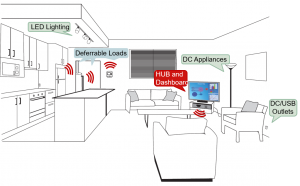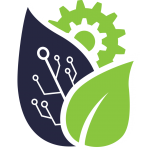Remote Monitoring & Control Systems
Ever-shrinking technology has enabled the unobtrusive insertion of electronics into a wide variety of applications and devices. This trend not only increases local control and sensitivity, but when networked in aggregate, provides greater utility than the individual devices on their own. The Internet of Things (IoT), the infrastructure behind interconnected technology, is becoming ubiquitous across many sectors. It has already demonstrated success by increasing transparency and optimizing resource flows in agriculture and industrial applications, and is making steady advances into residential use. This goes beyond simply automating for convenience, such as a refrigerator that automatically places an order for milk as you run out, but also is a means of conserving resources and using them more efficiently and safely.
 The Internet of Things is defined as a network of monitoring sensors connected to machines allowing tasks to be performed remotely, such as switching on a light when you are on your way home or ordering milk. These systems can monitor, manage, and report on the operation and performance of networked devices, with finer granularity than can be expected by human control. However, the collection and storage of personal information using internet-accessible devices is not without risk for personal privacy. Furthermore, the denial of service attacks that previously disrupted Netflix, Twitter, GitHub, were launched from vulnerable IoT devices. The lack of investment in securing IoT platforms is a cause for concern and must be taken into account when selecting devices and applications.
The Internet of Things is defined as a network of monitoring sensors connected to machines allowing tasks to be performed remotely, such as switching on a light when you are on your way home or ordering milk. These systems can monitor, manage, and report on the operation and performance of networked devices, with finer granularity than can be expected by human control. However, the collection and storage of personal information using internet-accessible devices is not without risk for personal privacy. Furthermore, the denial of service attacks that previously disrupted Netflix, Twitter, GitHub, were launched from vulnerable IoT devices. The lack of investment in securing IoT platforms is a cause for concern and must be taken into account when selecting devices and applications.
In this suite of modules, we will first focus on introductory background and skills that illustrate fundamental computer science techniques and good engineering practice, with heavy emphasis on documentation. Students will learn and be able to demonstrate simple, point to point communication by programming Embedded Systems for remote monitoring and feedback control. As applications become more complex, multiple, interconnected nodes communicating through a supported Networking Infrastructure becomes necessary. Finally, students will be challenged to augment their system by using computer vision to process visual information in Graphical Application Design or develop custom hardware for an autonomous vehicle to navigate the world in Autonomous Vehicles & ROS.

